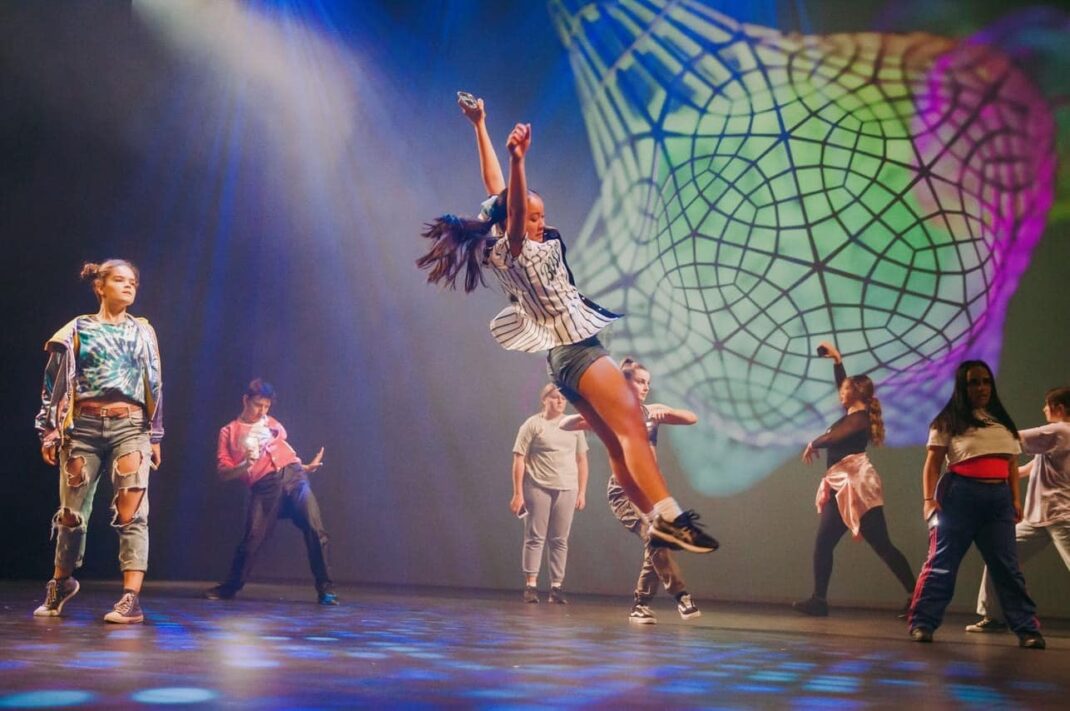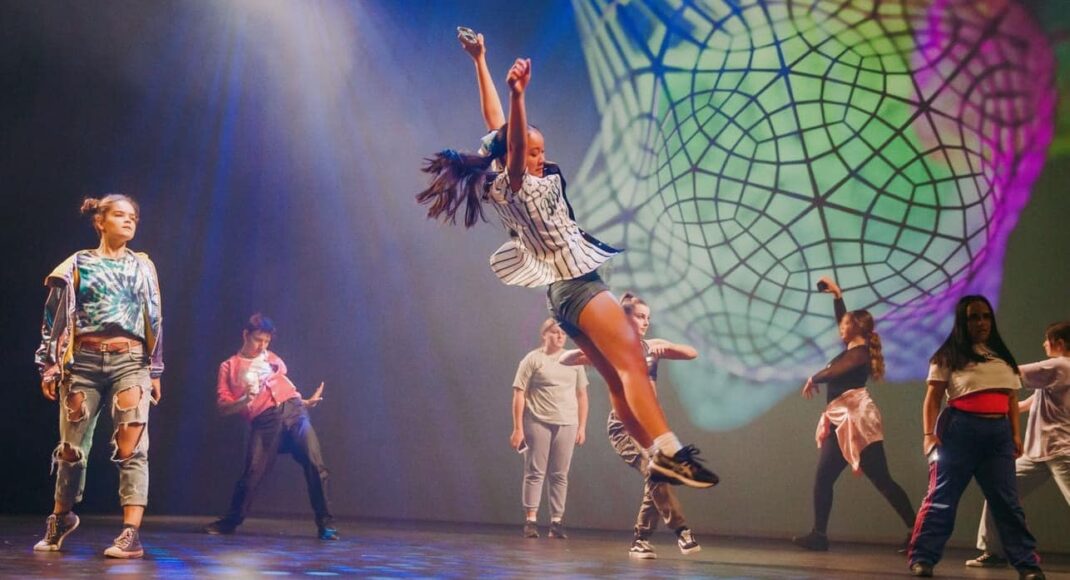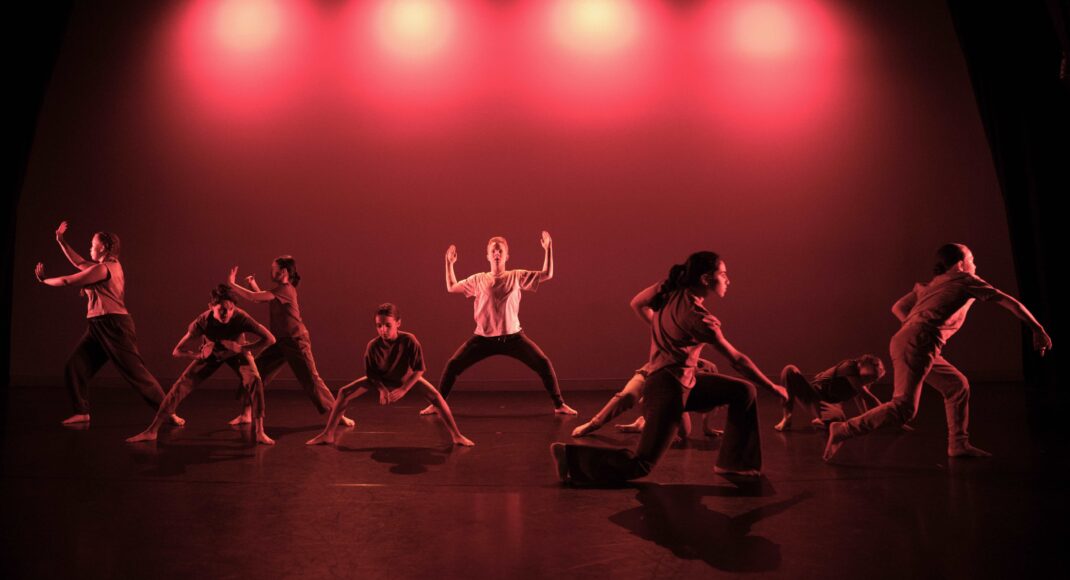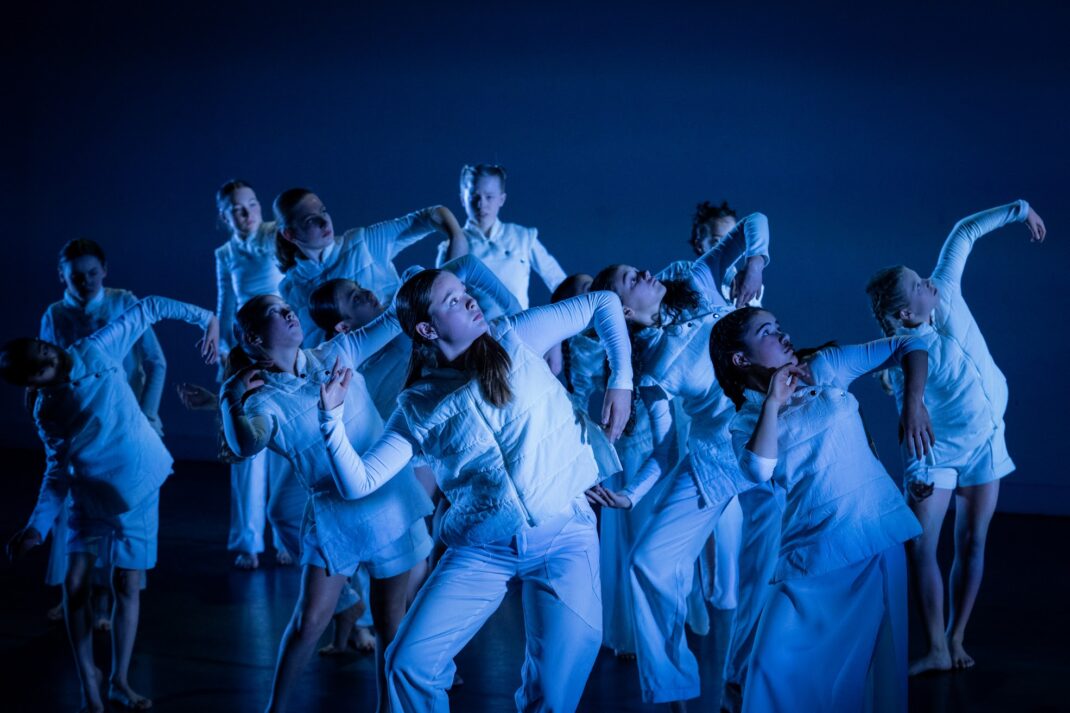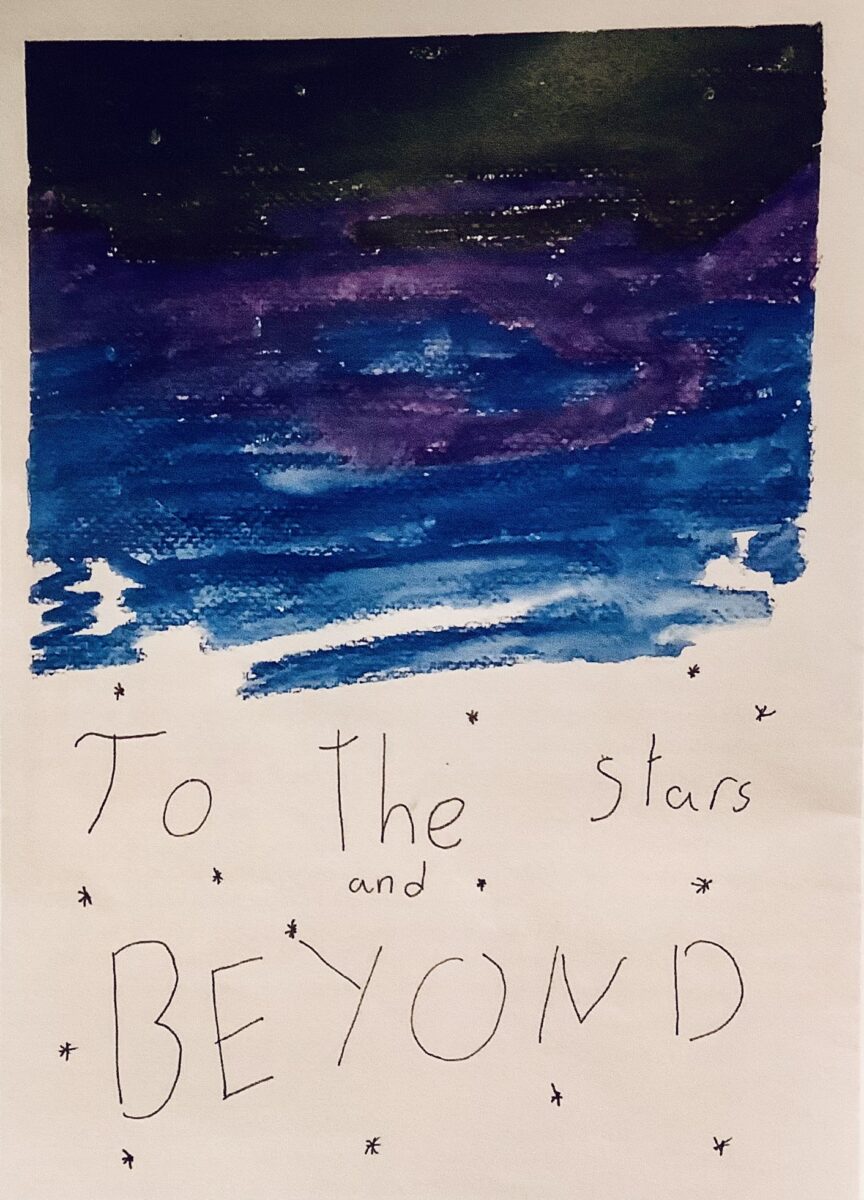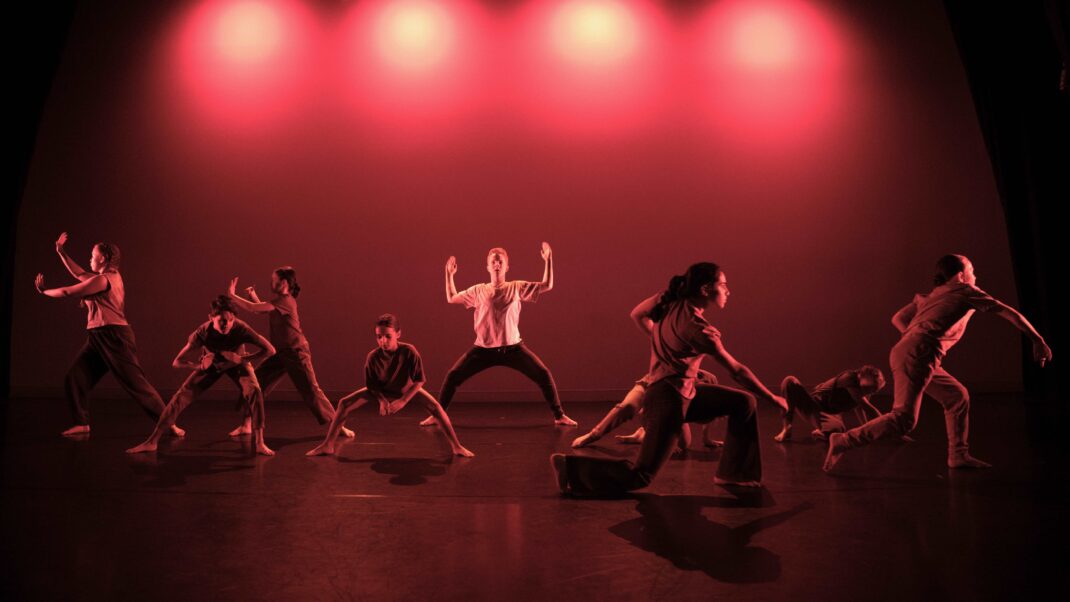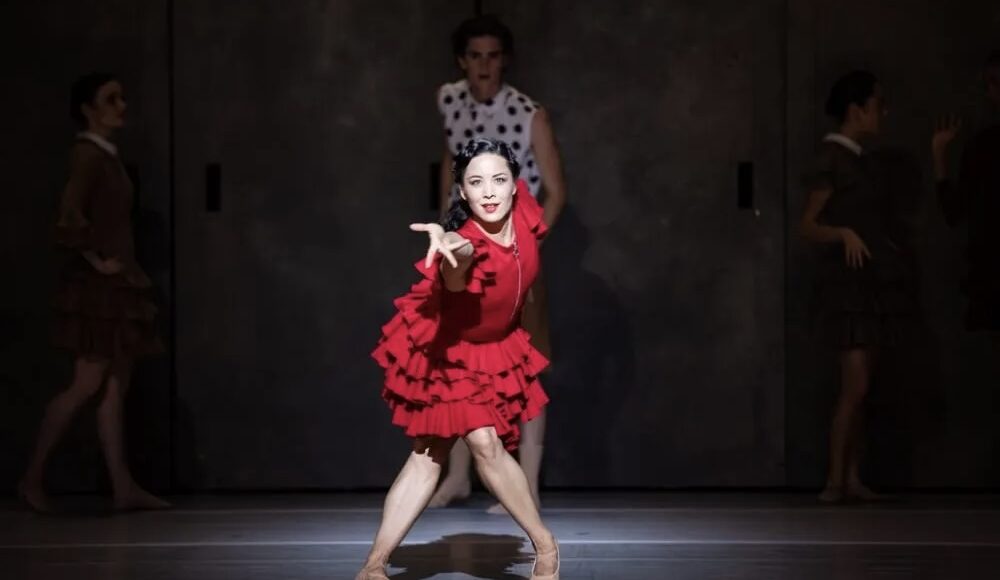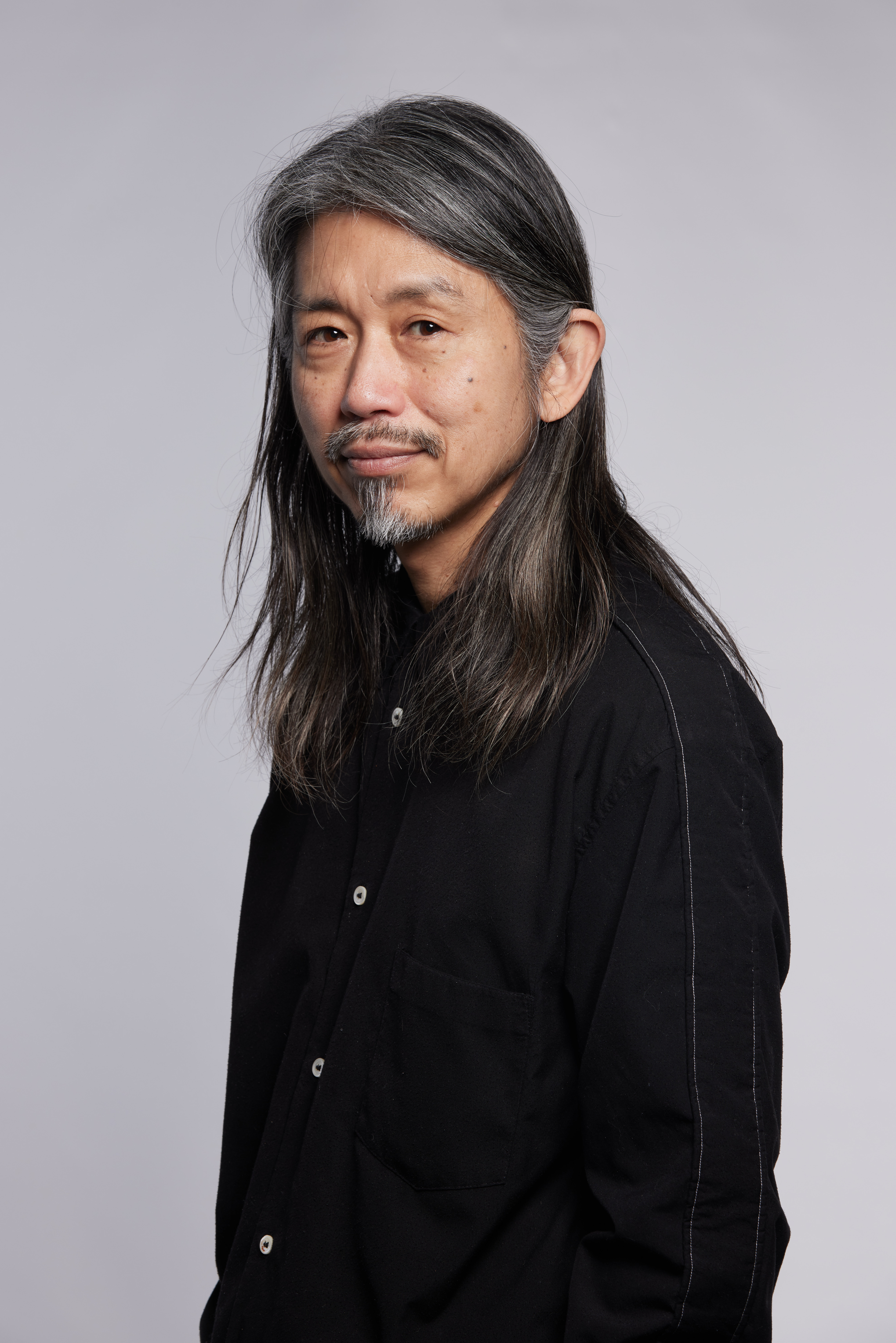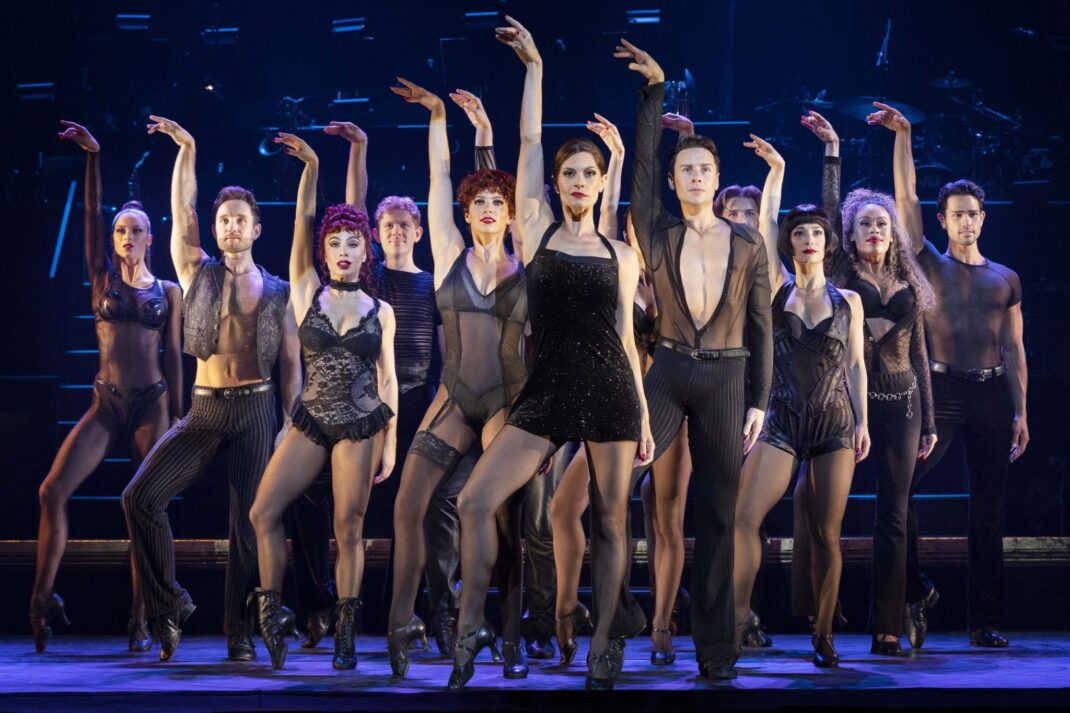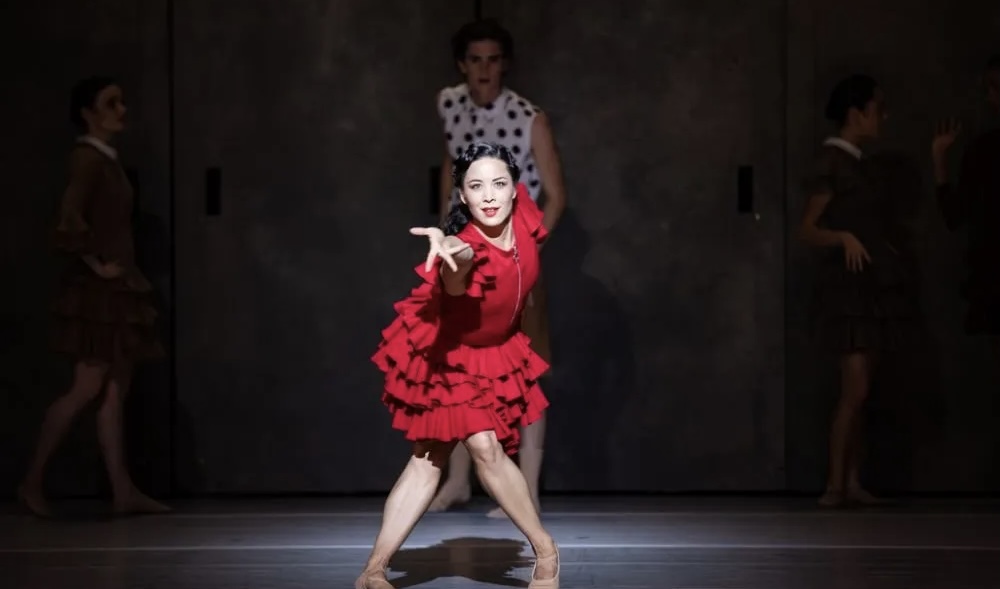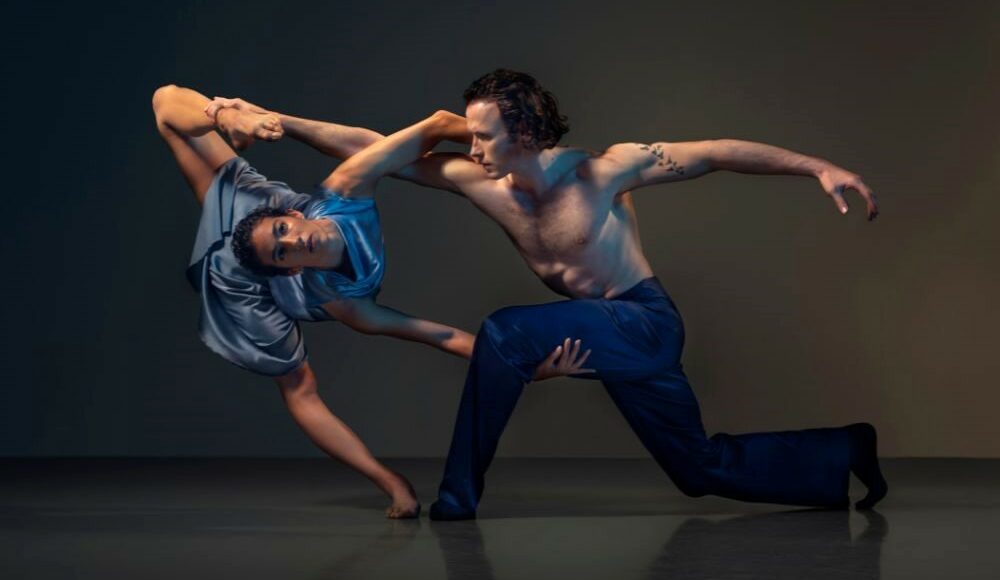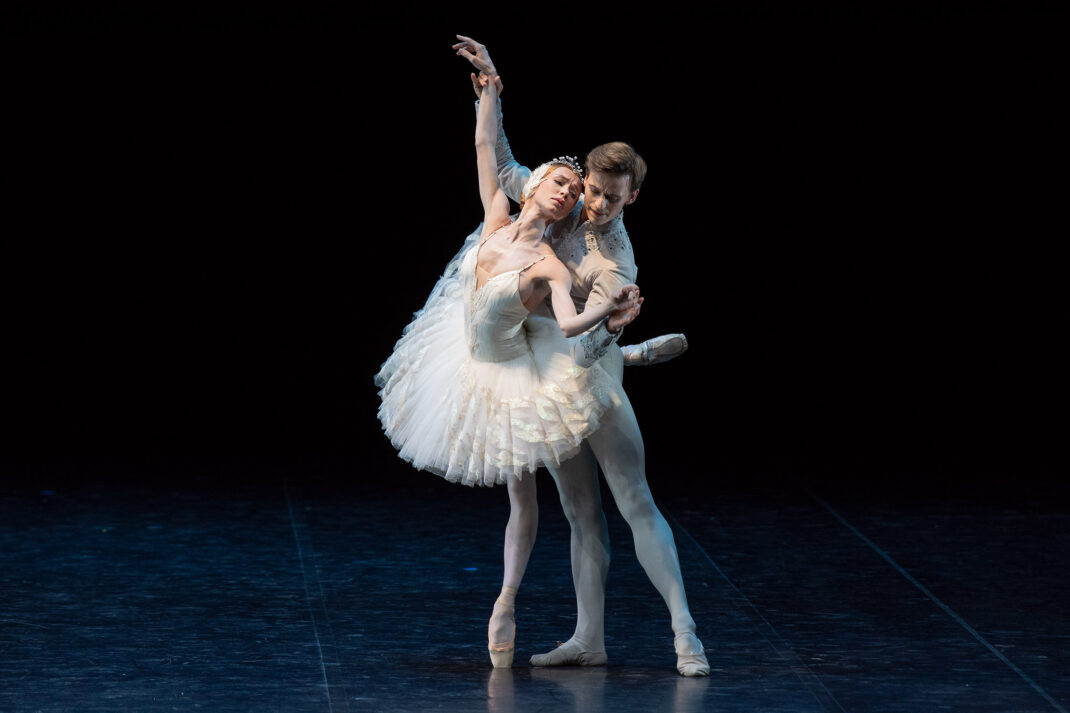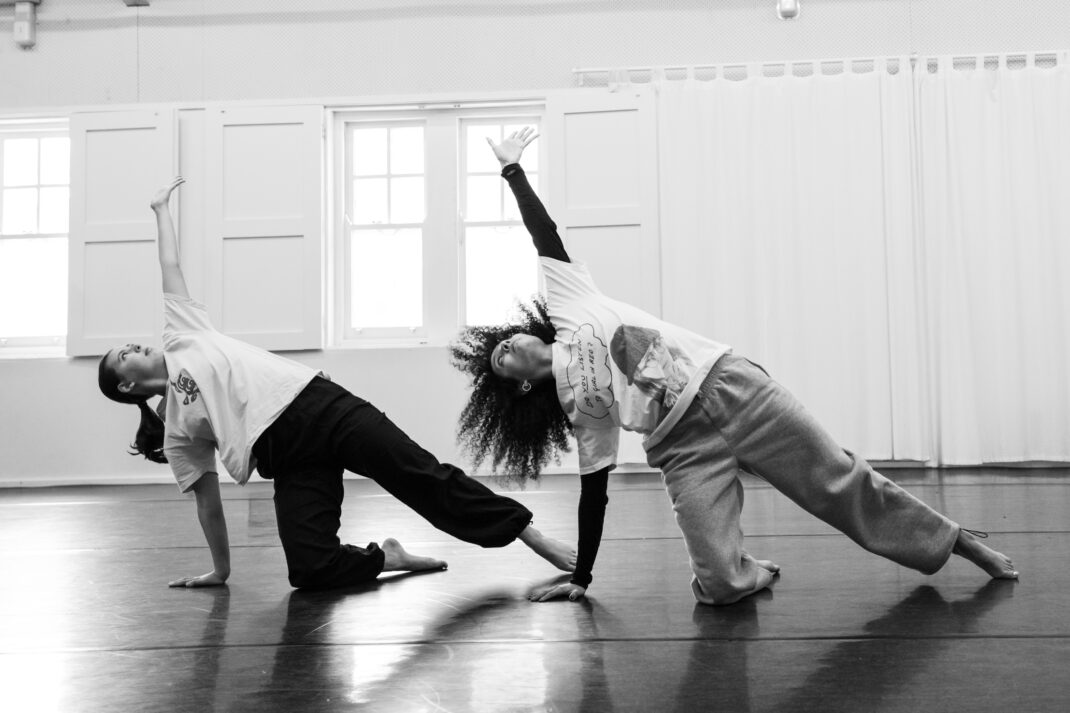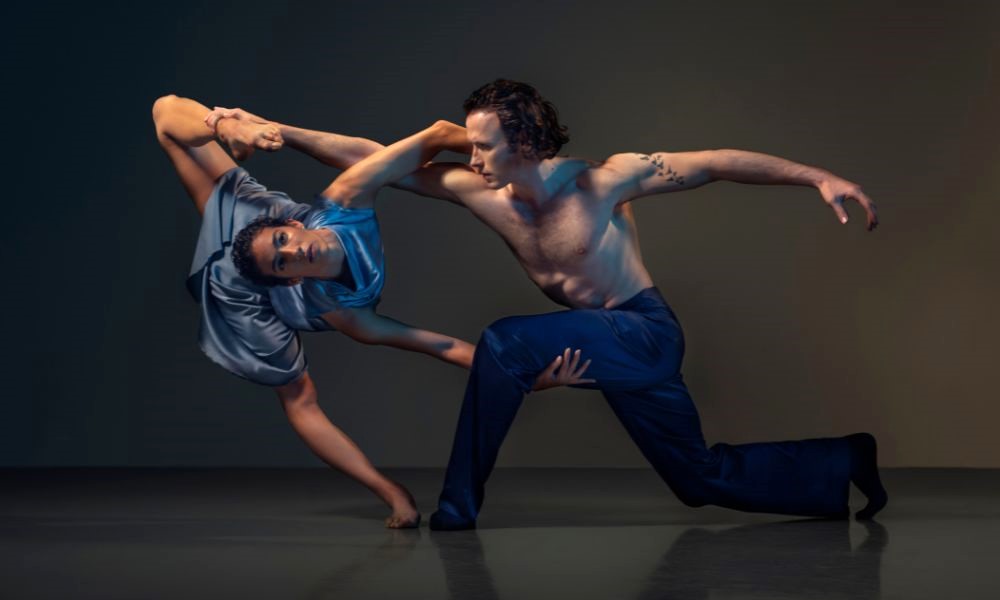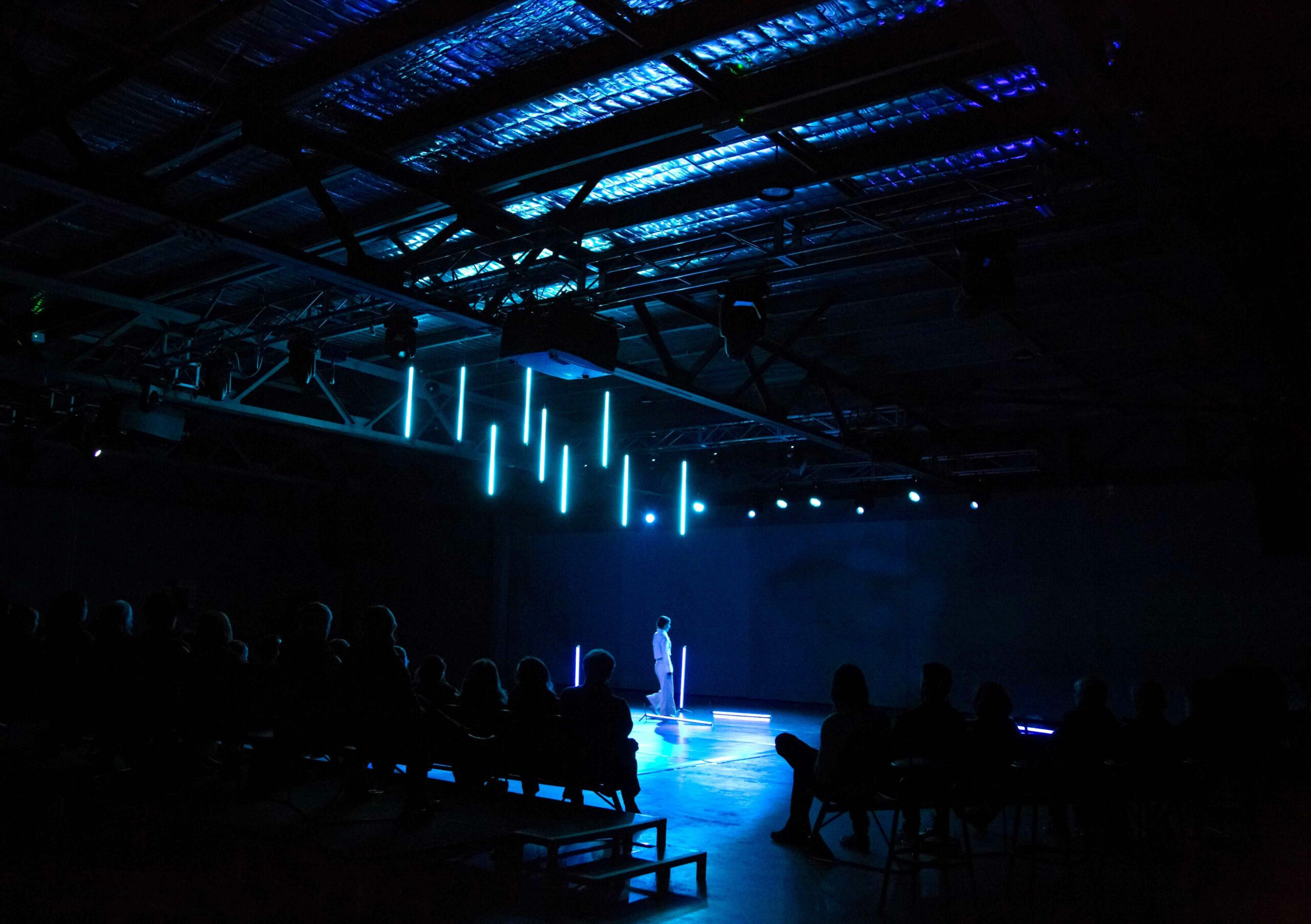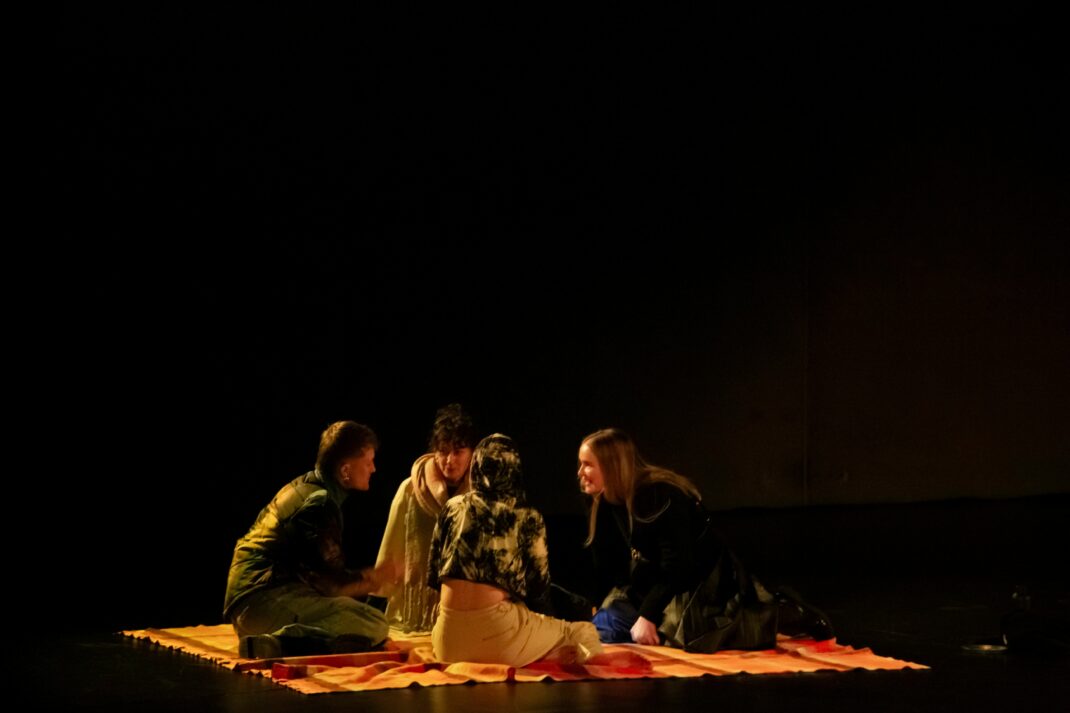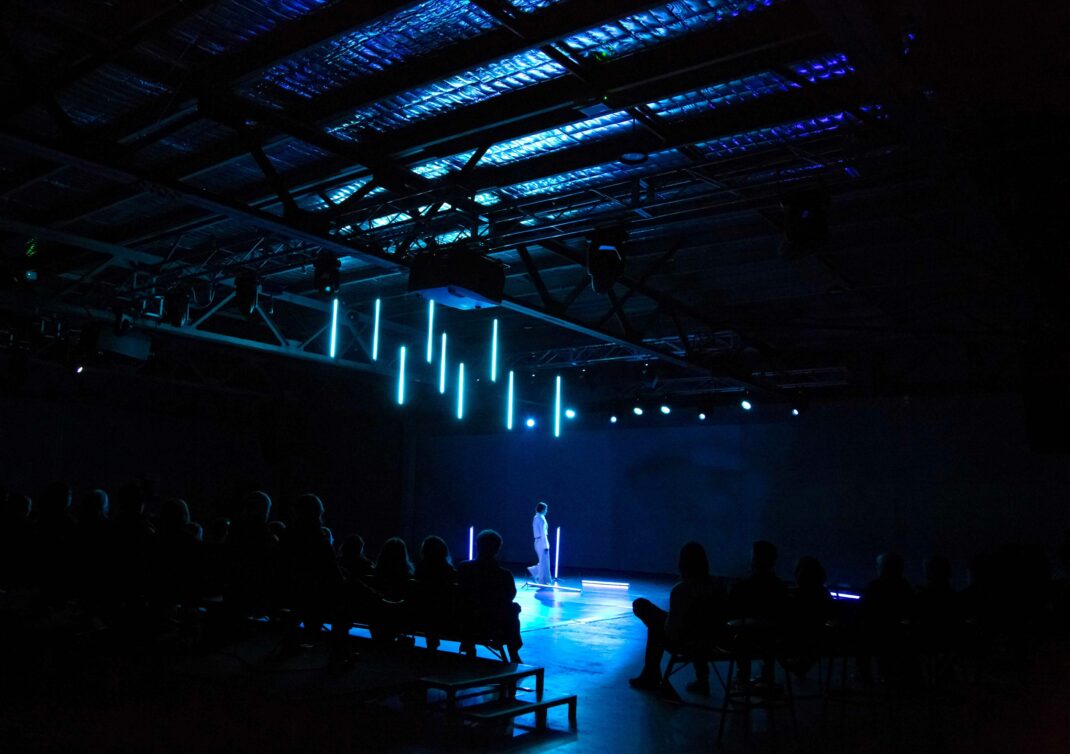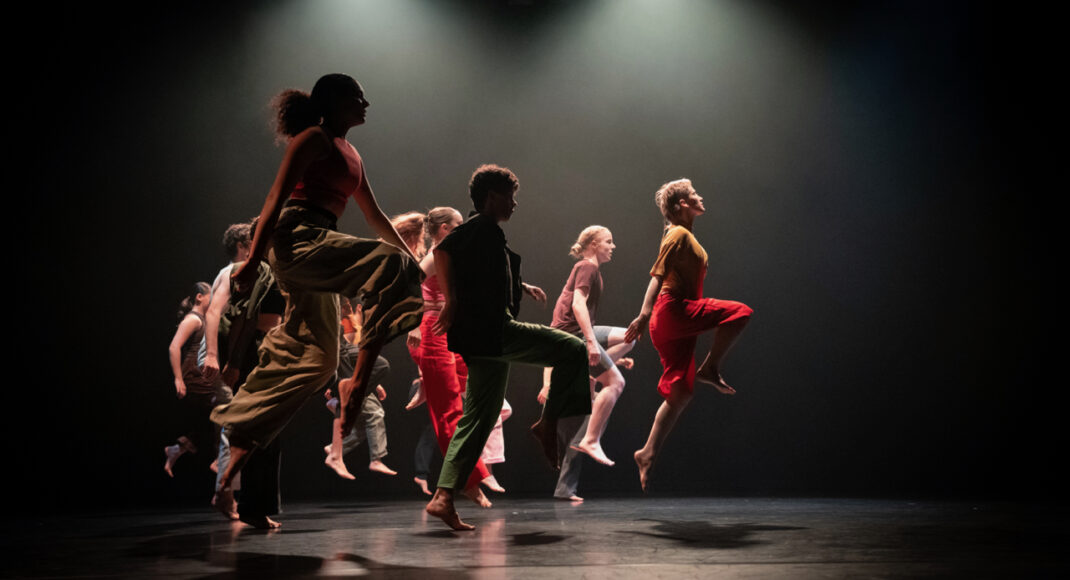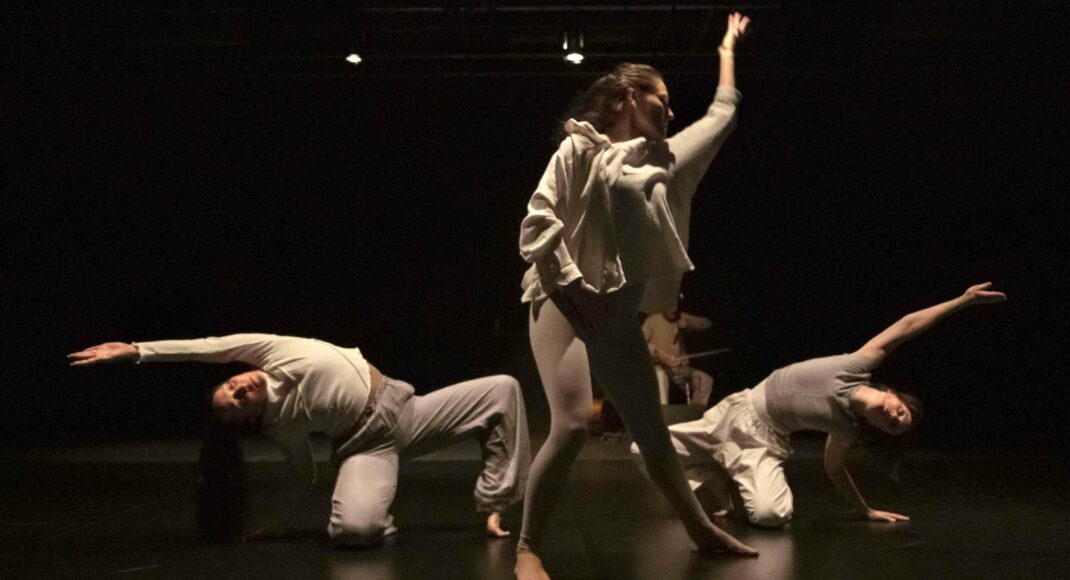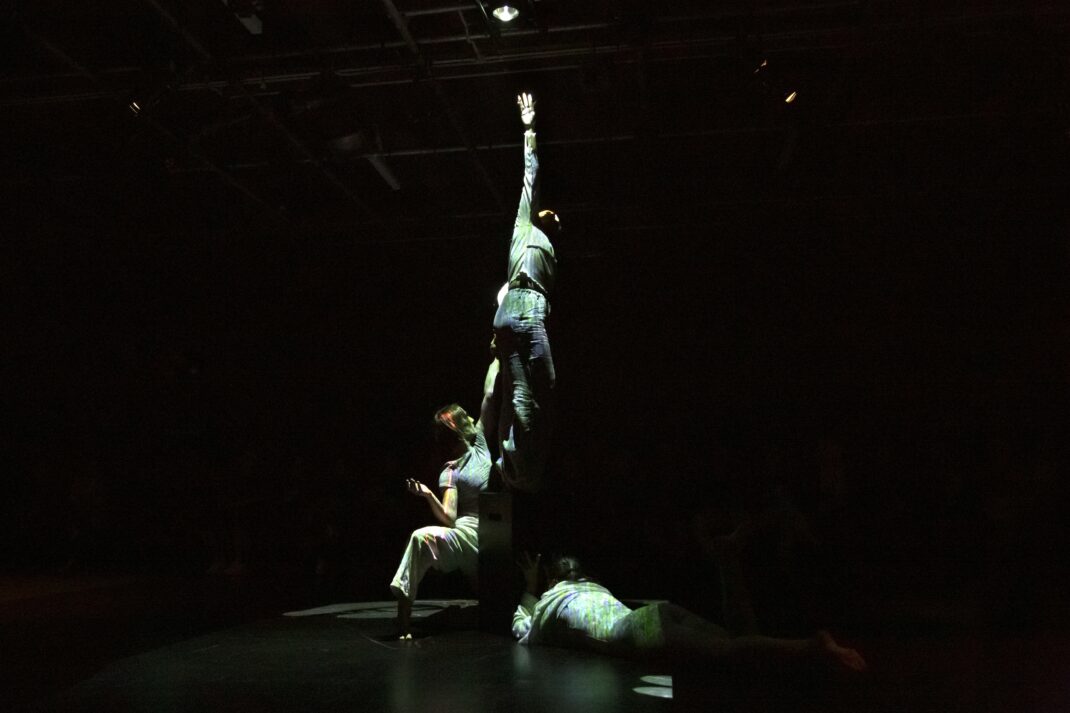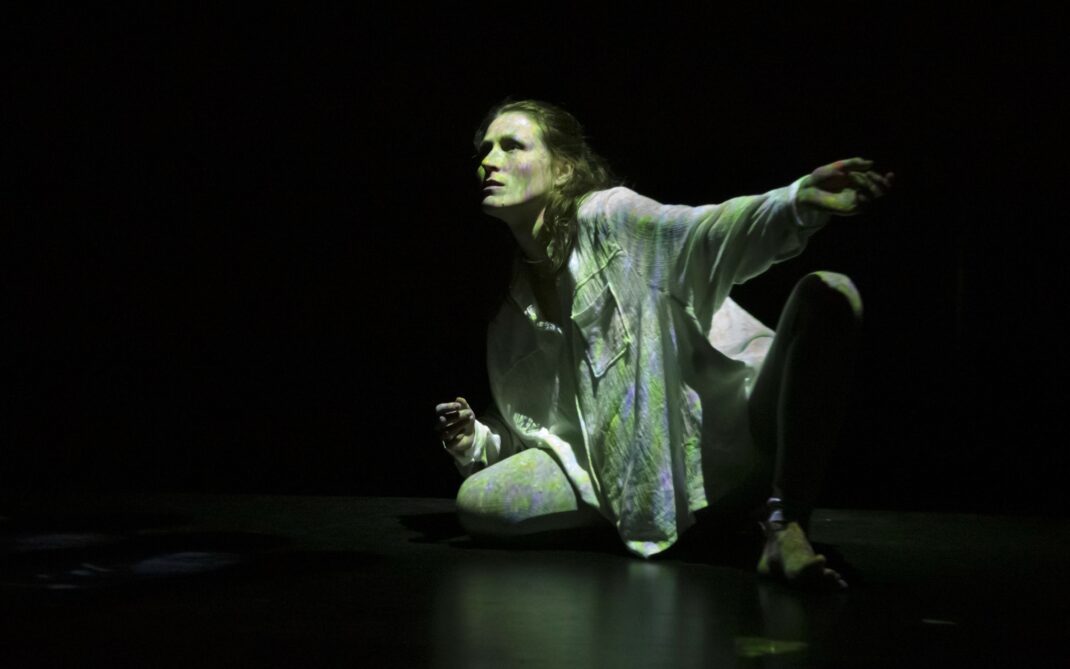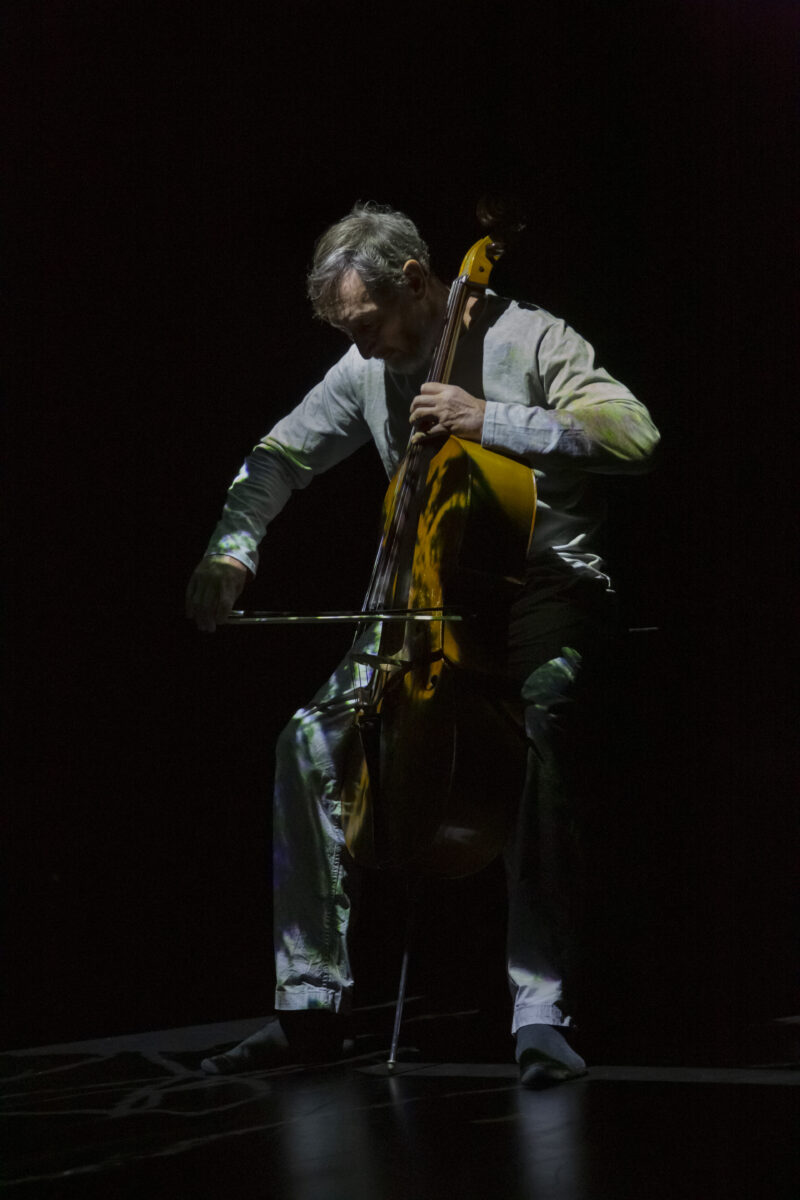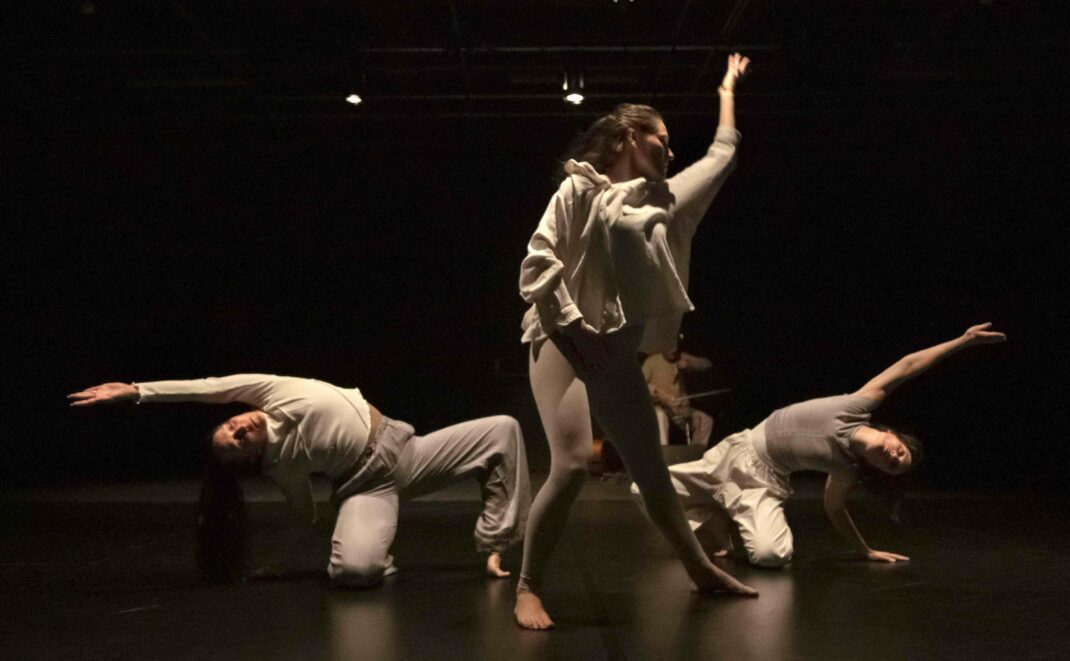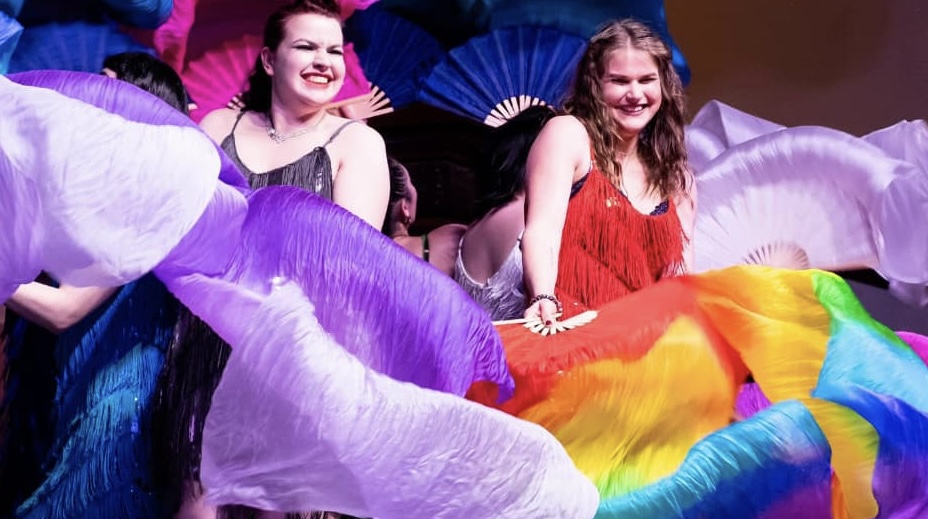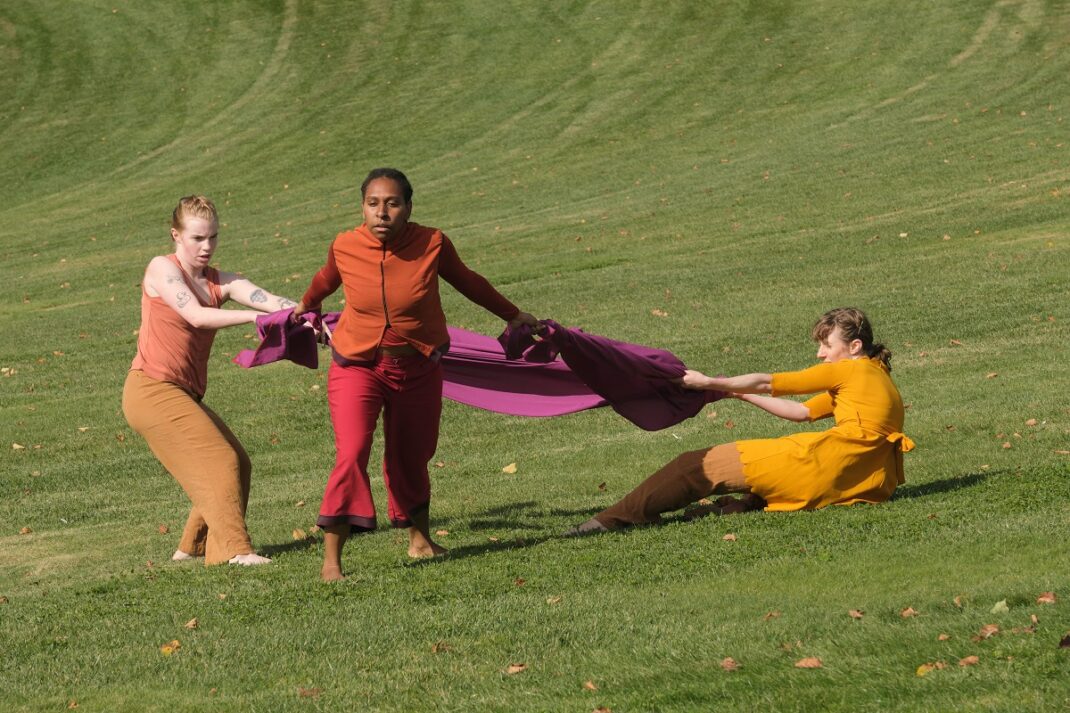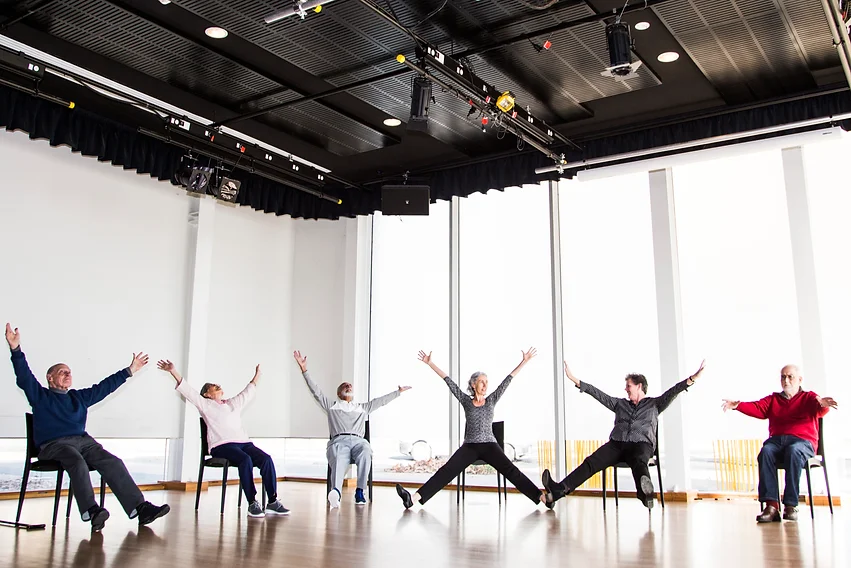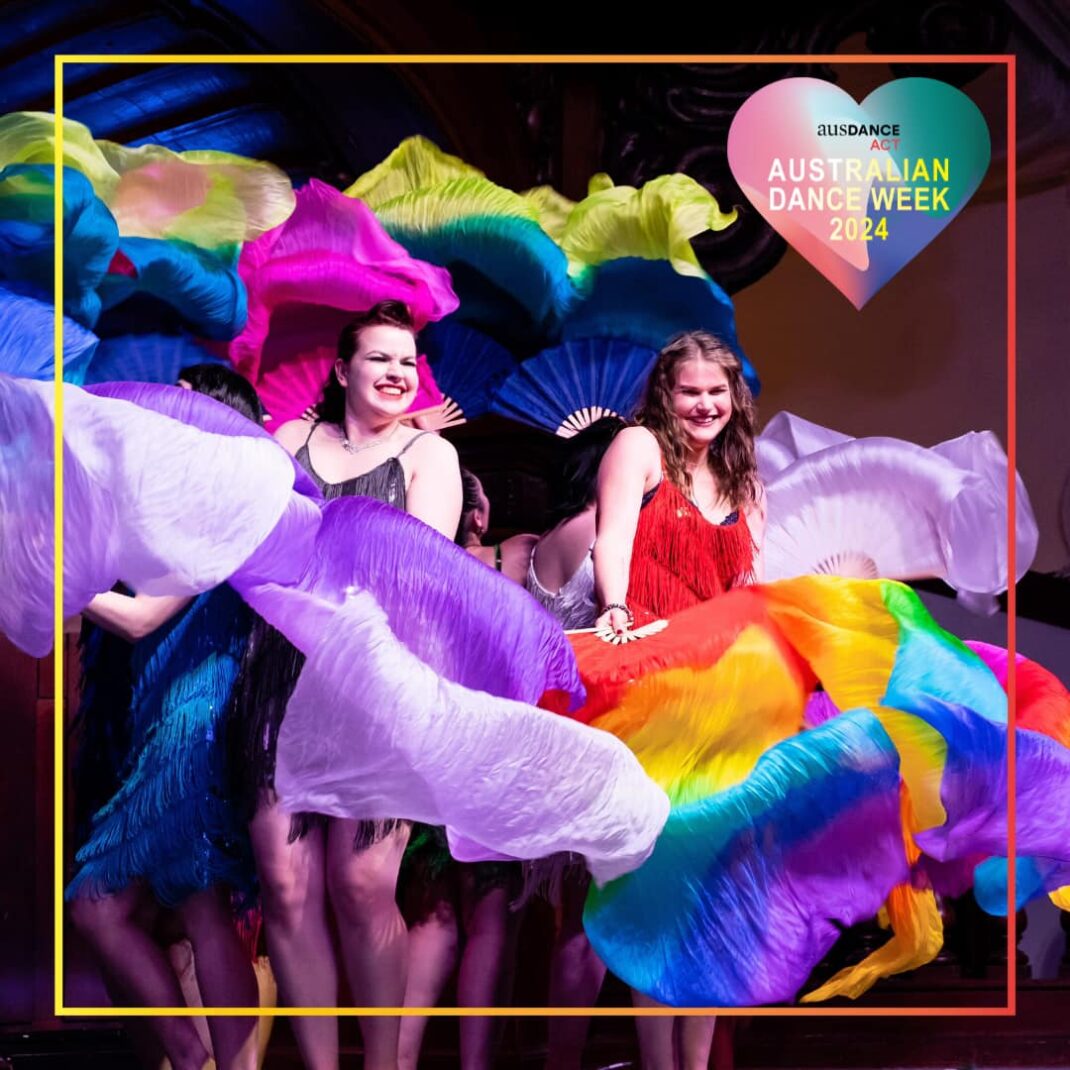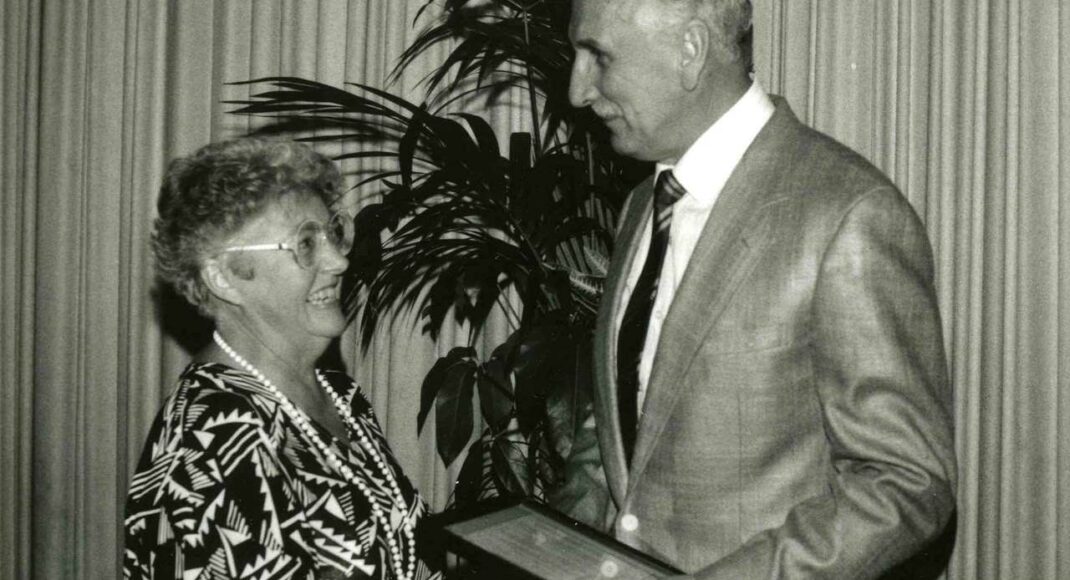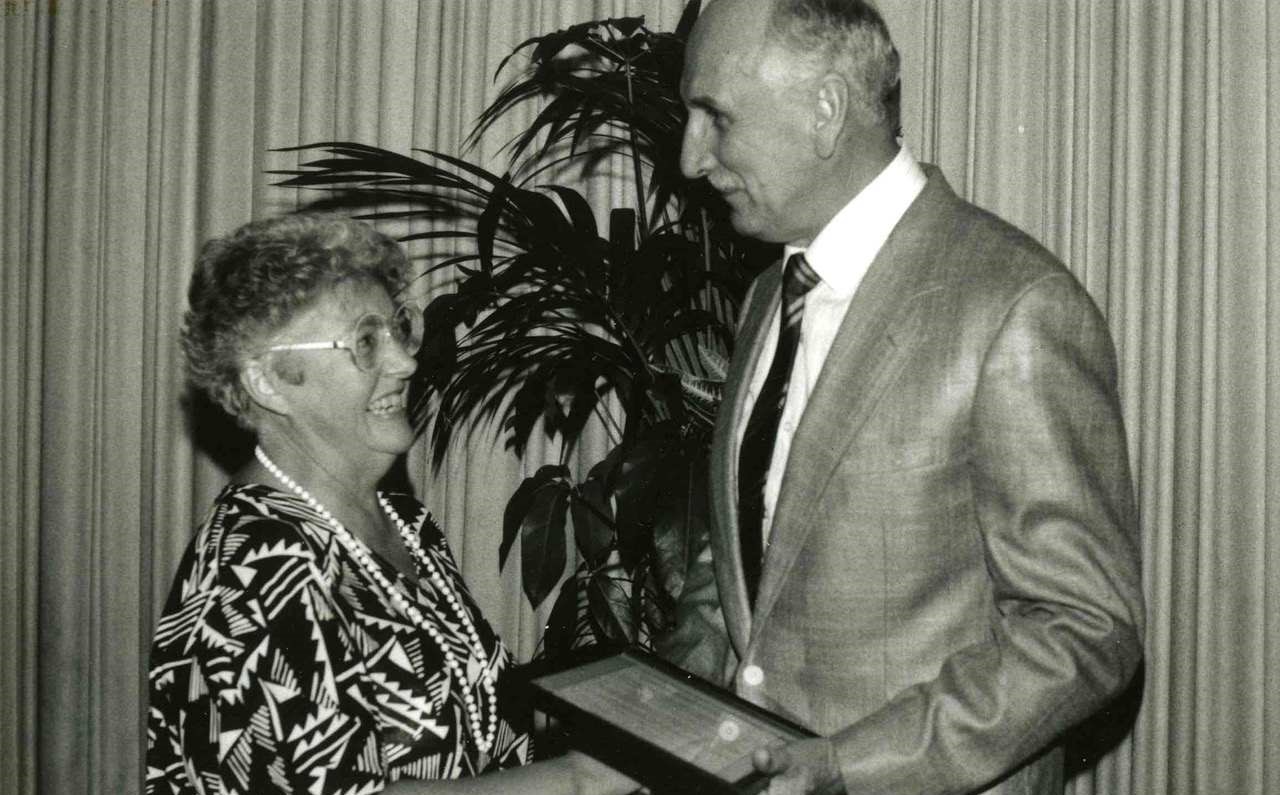Canberra’s Youth Dance Festival has been a significant part of the city’s dance scene for an impressive four decades. It will shortly celebrate its 40th birthday with a program featuring a total of 45 short works danced over three nights by an incredible 800 students from 28 Canberra and district schools. Put together by Cathy Adamek, current director of Ausdance ACT, the 2024 program is called ‘What do you dream?’ and focuses on personal choices as life slowly returns to a stage where COVID no longer rules our lifestyle. As Adamek tells me, ‘This is the first time that the current generation can think about their future in terms of stability, in a way that is not inhibited.’
The 2024 theme follows on from those of 2021–2023 with the 2021 Festival, the first directed by Adamek, needing to be created as a digital production as a result of the COVID pandemic. The Festivals of 2022 and 2023 were live events but, nevertheless, their themes reflected the difficulties that had arisen as a result of the pandemic.
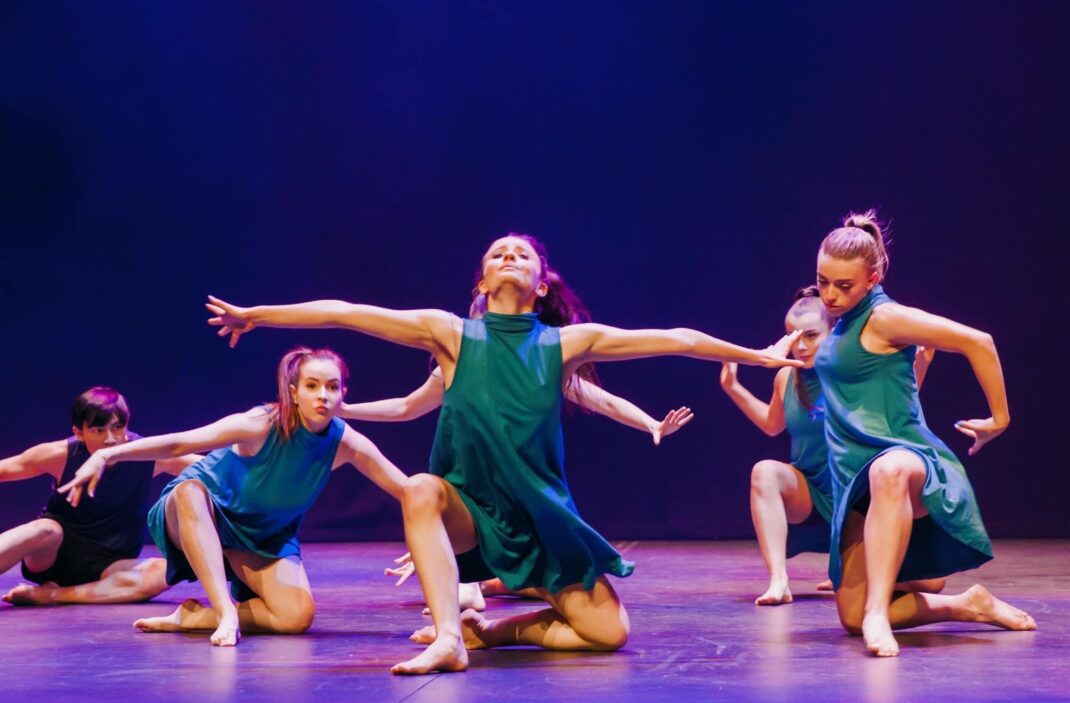
The process of getting the works onstage is a complex one, identified by Adamek as a matter of ‘co-creativity’. She suggests that it is this structured process that has made the project a durable one over the years. The choreography is largely student-led but the Festival has a group of mentors who visit schools to assist and advise, and who provide support and guidance to the students as they prepare their works for the performance. In addition, and as the result of a specific donation, the Festival will have (for the first time since 2021) a special opening work choreographed jointly by KG from Passion & Purpose Academy, Caroline Wall from Fresh Funk and Francis Owusu from Kulture Break.
I am fascinated too by the importance during the development process of a graphic item, in 2024 designed by Japanese-Australian artist Natsuko Yonezawa. ‘The graphic is part of the creative impetus,’ Adamek says. ‘I always suggest that creators use it if they want an inspiration for things like colours, tones, costumes. It’s part of giving the participants an awareness that creating a piece of dance theatre is not just about choreography.’
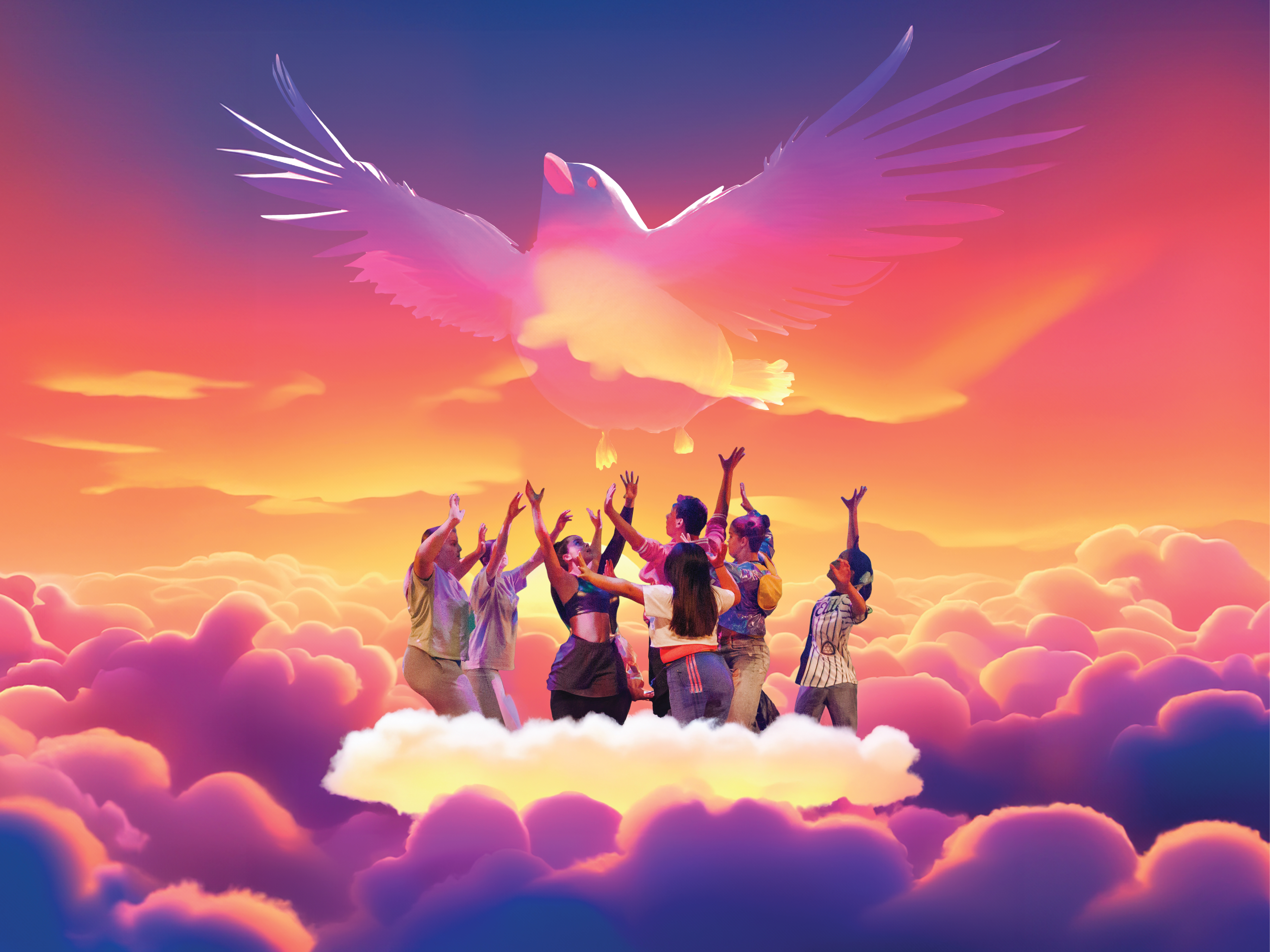
Canberra’s Youth Dance Festival began back in 1984 as the High Schools Dance Competition, an initiative of Melba High School teacher Marie de Blasio. It was supported by Audsance (then known as the Australian Association for Dance Education) and by the city’s two dance companies, Canberra Dance Theatre and Human Veins Dance Theatre. What followed in 1985 was a slightly changed format. As a result of an Ausdance survey of Australian dance, and spurred on by having seen a youth dance festival in Perth, run by the West Australian Department of Education for regional schools, Julie Dyson and Hilary Trotter worked with the then president of Ausdance, Annette Douglas (also a dance teacher at Dickson College), to set up a non-competitive, student-led event that would focus on dance but embrace other art forms such as poetry, music and design. Teachers were offered mentoring and the event would be held in a professional venue with professional lighting and an experienced producer. Further changes were made in 1987 when a time limit was set for each work.


Since those early years the concept of a non-competitive, student-led arts/dance festival remains. The 2024 Youth Dance Festival takes place over three nights, 6-8 November, with each night having different schools performing. See this link for booking information and for a list of schools performing on specific nights.
To support the Youth Dance Festival so it might continue its work see this link to an Australian Cultural Fund project.
Michelle Potter, 22 October 2024
with thanks to Cathy Adamek, Emma Dykes and Julie Dyson for their input into this post.
Featured image: Scene from Debora di Centa’s opening work at the Youth Dance Festival 2021. Theme: Digital Dystopia Utopia. Photo: © Andrew Sikorski, Art Atelier Photography
